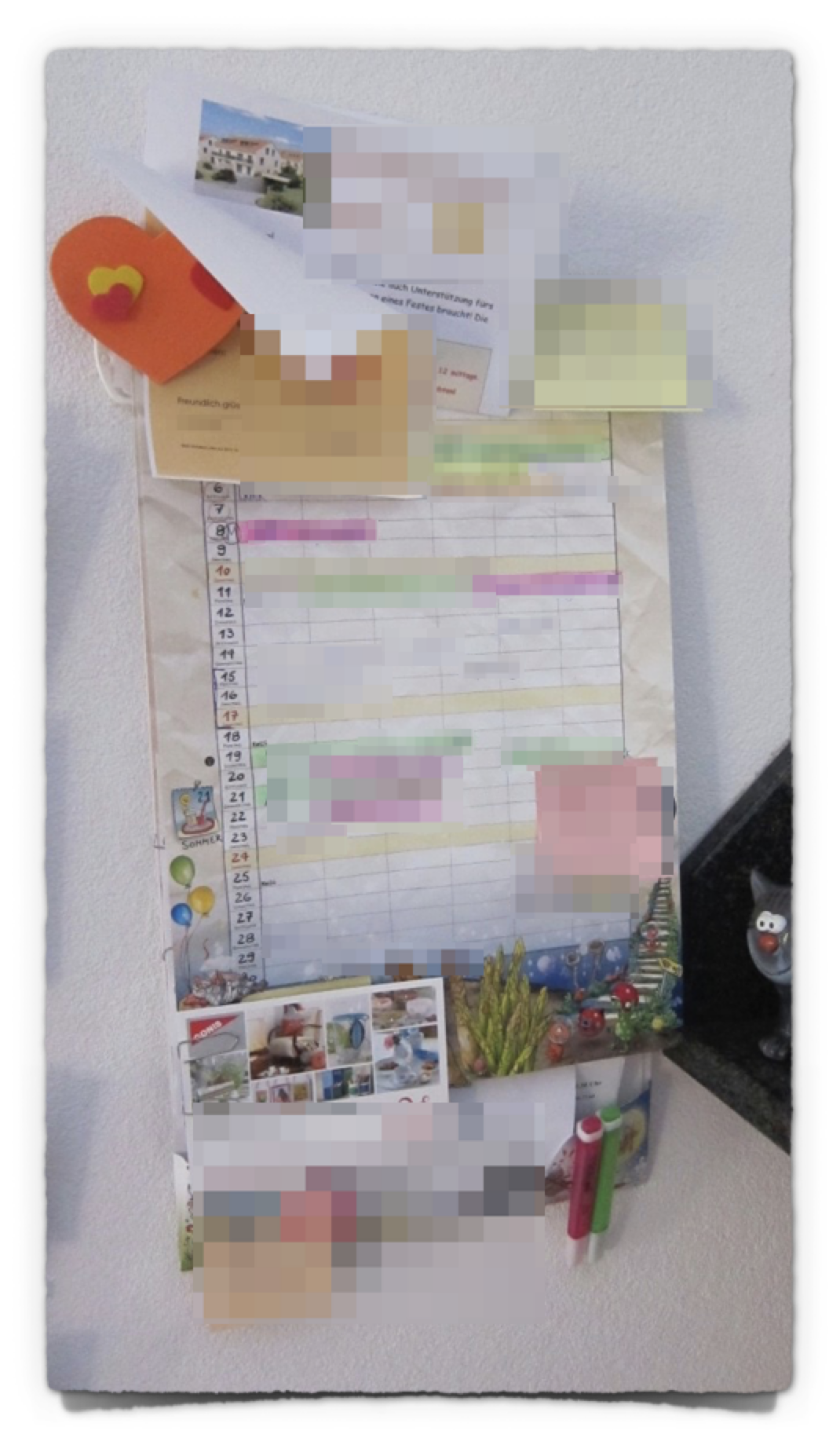I’m often the go-to IT person in my circle of friends, so I’m used to get questions like “should I buy this device” to “what do you think of this specific app” quite regularly. While I may not have the perfect answer, I always try my best to help them ask the right questions to find what works best for their unique situation.
Recently, I got the opportunity to apply that “approach” again, when a friend asked me about introducing a digital calendar into their family of five to ease her mental load. Her question immediately piqued my interest, as not only is parental mental load a strong passion of mine, but in the past I also researched digital calendar for families in smart homes. So I was thrilled to dive in!
The Stress of Being the Family COO
Before diving into solution mode, I asked my friend to share more about her current challenges and what she hoped a digital calendar would solve. She described feeling like the “COO of everything”, constantly responding to questions about schedules and details for all family members, even when she isn’t at home. Also needing to coordinate with her husband as his work calendar cannot be shared, but contains information about his availability. She hopes a digital calendar will reduce everyone having to ask the “COO” aka her and minimize surprises from last-minute events.
It turned out that each family member already had a digital calendar, but my friend was the sole administrator for all of them. Just seeing all the color-coded calendars and events on her computer stressed me out, wondering how she can keep track of it all without losing her mind.
Avoiding Calendar Overload with KISS
After asking more questions about her current setup, I wondered if we could apply the KISS principle.
KISS Principle
Keep it simple, stupid (KISS) is a design principle that emphasizes simplicity. It suggests that most systems work best when they are kept simple and straightforward.
From my previous research on families living in (and having to configure) smart homes as well as from the substantial body of research from my intern host AJ Brush and my PhD examiner Carman Neustaedter on family calendars, I know that interfaces/apps/services usually only stick if they are as simple as can be and easily accessible to everyone. And then, over time, it can evolve into something more personalized and sophisticated. Just like how a paper calendar usually starts quite simple, but then becomes a very information-rich tool with little snippets from all sorts of different sources.

For my friend, the goal was to create a minimal setup that addresses her biggest problems, and then – later – experiment to know whether or what additions might be needed.
Implementing a Simple Shared Calendar
As a fan of Google calendar for its simplicity and accessibility across different devices and operating systems, it was an easy thumbs-up when she said that this was what she was considering. I advised her to start with just a few setup steps:
- Create ONE family calendar: Establish a single, central calendar for all family events that acts as the ground truth.
- Share that calendar with everyone: Ensure that everyone can access it from at least their primary device.
- Establish rules and routines: Think about simple guidelines for entering and updating data so that everyone contributes and knows how to use it. For example:
- When tentative events come up, add them with your initials and “TBD” (e.g,. “Kid1Initials - Friend’s birthday party TBD”)
- If someone’s presence is mandatory and/or you need to confirm with them, invite them to the specific event via their email address, so they are aware and see the event also on their personal calendar.
- Adjust notification settings: Change your calendar notification settings to stay informed of changes. For example, I set our shared family calendar to notify me via email when new events are added or modified by anyone. (Not for cancelled events, though–they feel like a bonus, hello unexpected free time!)
Little Hack for Balancing Unplanned and Planned Time
Over time, I noticed our calendar always filled up with plans with our more proactive, plan-ahead friends. I love them and I love planning, too! But I realized that I was missing out on hanging out with my more spontaneous friends.
Ironically, I now plan ahead to be spontaneous by setting up a recurring block on our shared family calendar for one Saturday and one Sunday every month. That block can be moved (to make sure we can still plan further into the future), but it cannot be deleted!

This simple trick has been fantastic to make sure that despite my plan-ahead nature, I still have time for laid-back, go-with-the-flow commitments and don’t overcommit to long-term plans. I’m curious what little hacks and tricks my friend and her family will come up with!
Different Dynamics Require Different Setups
In my research, I’ve seen that often times a change in life circumstance triggers families to transition from a paper calendar to a digital one. Think situations like a new job that requires coordinating commutes, a kid starting school and suddenly having more activities to keep track of, or kids becoming teenagers and starting to make plans on their own. Implementing a shared digital calendar can be a game-changer for families looking to reduce mental load and improve communication. By putting in the effort to create this central hub for schedules and events, everyone can stay informed and aligned without check-ins with the “family COO.”
If you’re considering introducing a digital calendar to your family, remember you can always start super simple, have a few guidelines only, and stay open to adjusting as you go and discover what works best for your unique dynamics.
Do you have any digital calendar tips or hacks that have made a difference in your family’s organization?